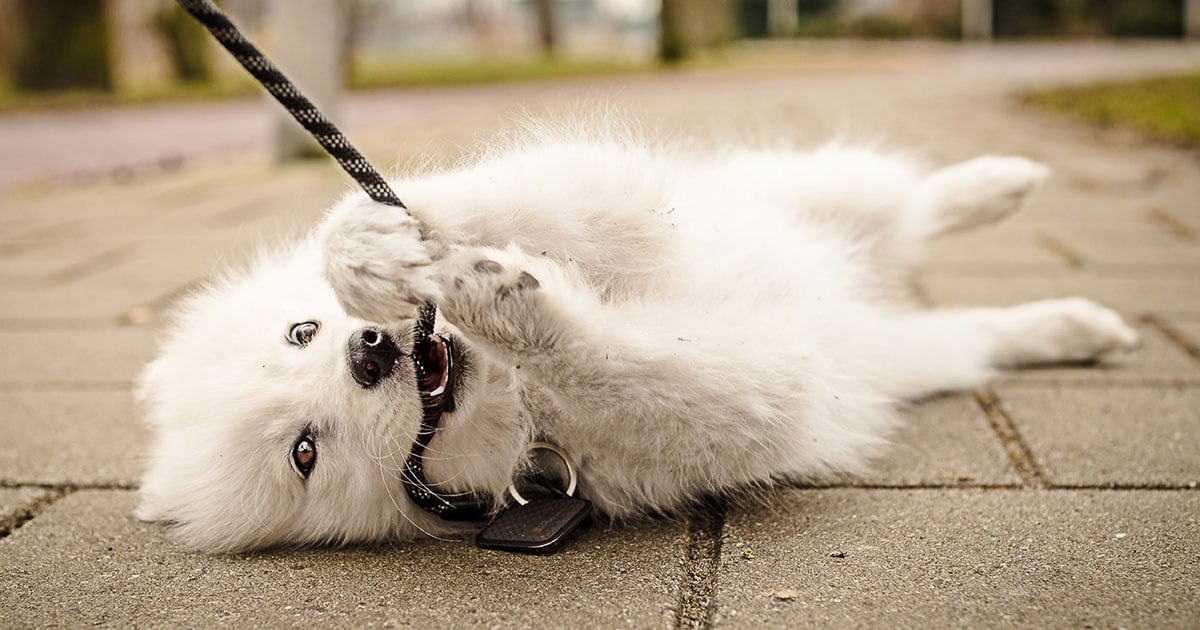“Rescue Me” is a recurring column by Samantha Randall, editor-in-chief at Top Dog Tips. She’ll provide personal anecdotes and perspective about her life as a pet lover with a passion for cat and dog rescue. Today, she discusses how to leash train a rescue who may be set in its ways.
Taking in a rescue dog can be the beginning of a beautiful friendship. But building the foundation for that friendship is sometimes difficult and time-consuming.
Some rescue dogs may lack training, and you’ll need to correct that. This takes time and patience, especially if your new friend is stubborn or set in his or her ways.
Leash training is perhaps the most important and hardest part of that training. If your new pet refuses to walk on the leash or always pulls when you go for a walk, there are a few things you can do to encourage cooperation.
Choose the right leash
Before you even start to leash-train your rescue pup, you need to find the perfect collar and leash. The collar needs to fit comfortably around your dog’s neck and be fitted properly. It has to be tight enough so the dog can’t easily get out of it but not too tight to make the dog uncomfortable. The leash you select needs to be long enough to give your dog some space but not too long so they can move freely over a large area. After your dog is leash-trained, you can introduce a longer leash. Until then, it is best to stick to leashes 4-6 feet long.
Make sure that both the leash and the collar are in good condition. Any damage to them could tear under pressure. Also, the clip that connects them needs to be firmly secured.
Finally, while it is recommended to leash-train your dog with a collar and not a harness, if your dog is pulling on the leash and nothing else works, consider getting a no-pull harness instead. These harnesses are much safer for dogs that pull a lot and remove the danger of them hurting themselves.
Correcting bad habits
There are many reasons why a dog might resist walking or pull on the leash. For example, rescue dogs often haven’t had leash training, which can make them feel afraid of the smell or sight of the leash. Dogs can also be too excited to go on a walk, which can make them pull on the leash and ignore your commands. Luckily, there is always a way to correct the bad habits your new furry friend may have. You might need to try more than one of the training techniques, but if you are patient and persistent, your dog will eventually learn how to walk on a leash.
Start the training inside
If your dog seems scared of the leash or at least uncomfortable with it, you need to take things slowly and start the leash training inside. First, try to get your dog familiar with the leash and collar. Let the dog smell and see the gear so they can see there’s nothing to be afraid of.
Once the dog is comfortable being close to the leash and collar, put the collar on first. Let them wear it for a while in the house. You may try playing to distract from the fact that they have a collar on.
When the pup is finally comfortable with the collar, add the leash and let them walk around the house. Gradually increase the time you leave the leash on, and when you feel it is time, take the leash in your hand and start the next phase of training.
Use positive reinforcement
When you start the training, every little progression should be rewarded with a treat and praise. For example, when your dog accepts having the collar put on for the first time, use positive reinforcement to reward the behavior. This method ensures that your dog understands that positive behavior leads to a reward. However, don’t yell at your dog or punish them if they don’t behave well. Try to sternly let them know with your voice that they were bad but remain patient and try again.
Teach how to walk properly
Once your dog is comfortable with being on the leash, it is time to teach them how to walk with it. First, remove any distractions from your home, especially the toys. Get your dog to stand by your side when the leash is loose. If they stand still, reward with praise and a treat. Then, take one step forward. If your pooch remains by your side and doesn’t start to pull on the leash, reward again.
Keep doing this until you and your pooch are walking around the house without any problems.
Use verbal commands
Verbal cues or commands are very important. They let your pooch know what you expect and how to behave. While it may be hard to teach a stubborn rescue dog commands, it is important to teach the basic ones, like “come,” “go,” and “sit.” These essential commands can make leash training easier.
Take your dog outside
Once you teach your dog to walk on the leash inside your home, it is time to venture outside and see how they behave. Always bring treats with you to reward good behavior, at least for the first few journeys. Your dog may have more problems walking properly outside because there are many distractions that can get them excited or scared. However, if they stop paying attention, there are a few things you can do to ensure they behave well on the leash outdoors.
Walk your dog often
Repetition is the mother of learning. So, take your dog walking often and try to reinforce good habits while you are out there. However, if your dog doesn’t behave well every time you take a walk, it may be best to repeat the training inside for a while.
Shorten the leash
You will have more control over your dog if the leash is shorter. If you notice that your pooch is wandering around not paying attention to you, shorten the leash to regain control of their movement.
Walk faster
If your dog is easily getting distracted on the walk, you may want to try a faster pace to reduce their excitement in other things. Your pooch will probably enjoy the faster pace, and a fast walk is better exercise than a leisurely stroll.
Stop and stand still
If your dog pulls on the leash, you should stop walking and stand still to get their attention. When your dog stops, call them to come to you, and reward the behavior when completed. If your dog keeps on pulling, stay still until they stop, then move in the desired direction to lead them.
Leash training is worth the effort
Leash training a stubborn rescue dog is actually not too different from training any other dog.
Sure, the rescue may be more set in their ways than a puppy or a dog that had previous training, but with patience and persistence you should be able to correct all the bad habits. If that seems impossible, you may want to get in touch with a professional animal behaviorist to help you leash-train your pooch.
You’ll know the effort was worth it the first time you take your best friend for a leisurely stroll around the block.







